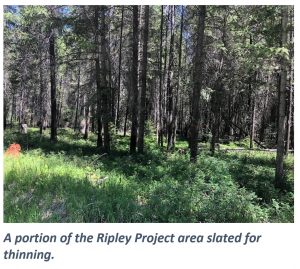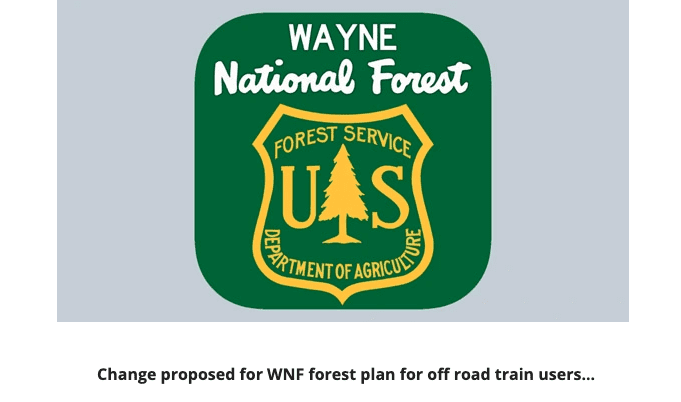
After about six weeks we have another summary from the Forest Service. The Forest Summary is here: NFS Litigation Weekly October 22 2021 EMAIL
It only covers two recent cases, so I’ve filled in some other happenings from early October below.
COURT DECISION
Swomley v. Schroyer (10th Cir.) — On October 15, 2021, the 10th Circuit Court of Appeals affirmed the District Court of Colorado’s September 3, 2020 order upholding NEPA compliance for the Upper Fryingpan Vegetation Management Project on the White River National Forest, challenged by 21 nearby residents who used the area for recreation. Additional background is in this article.
NEW CASE
Umpqua Watersheds v. Chambers (D. Oregon) — On October 14, 2021, Umpqua Watersheds, Cascadia Wildlands, and Oregon Wild filed a complaint in the District Court of Oregon against the Forest Service regarding the Archie Creek Fire Roadside Danger Tree Project on the Umpqua National Forest. The claims focus on whether a large-scale salvage logging project constitutes road “repair and maintenance” eligible for a categorical exclusion, and on consistency with the Northwest Forest Plan in late successional and riparian reserves.
BLOGGER’S BONUS
Court decision in Alliance for the Wild Rockies v. Marten. On October 5, the district court for the District of Montana adopted the magistrate judge’s findings and enjoined the Soldier-Butler Project on the Lolo National Forest because it was not consistent with the forest plan and also violated ESA. (I’ve provided a more detailed summary of the forest planning implications of this case below.)
Court decision in Sequoia ForestKeeper v. U.S. Forest Service. On October 5, the district court for the Eastern District of California adopted its reasoning from its prior decision to grant a TRO (discussed here) to grant plaintiff’ motion for a preliminary injunction against the Plateau Roads Hazard Tree Project on the Sequoia National Forest: “for the reasons that the Ninth Circuit explained in EPIC, allowing for large scale tree removal projects is inconsistent with the purposes of categorical exclusions …” (The TRO decision was described on this blog here.)
New case: Center for Biological Diversity v. Feldhausen. On October 6, the Center for Biological Diversity and Maricopa Audubon Society sued the U.S. Bureau of Land Management in the District of Arizona for failing to protect the Huachuca water umbel, a semi-aquatic endangered plant, from livestock grazing in the San Pedro Riparian National Conservation Area. The complaint alleges that failing to fence cattle out of the area violates BLM’s affirmative duty under section 7(a)(1) of the ESA to utilize its authorities to carry out an essential program for the conservation of this endangered species. (The news release includes a link to the complaint.)
New case: Center for Biological Diversity v. U. S. Bureau of Land Management. On October 7, the Center for Biological Diversity and Maricopa Audubon Society sued the U.S. Bureau of Land Management and Fish and Wildlife Service in the District of Arizona for failure to reinitiate ESA consultation on the effects of livestock grazing on threatened and endangered species in the Gila Box Riparian National Conservation Area in southeastern Arizona. Plaintiffs also include a Freedom of Information Act claim. (The news release includes a link to the complaint.)
New case: Center for Biological Diversity v. U. S. Environmental Protection Agency. On October 4, The Center for Biological Diversity sued the EPA for issuing a Clean Water Act permit without fully assessing the risks posed to freshwater endangered species by pesticides applied directly to water. The nationwide “pesticide general permit” establishes the requirements for pesticide applications directly to water for purposes including forest canopy pest control. (The news release includes a link to the petition for review by the Ninth Circuit Court of Appeals, as provided in the Clean Water Act.)
SOLDIER-BUTLER (Alliance for the Wild Rockies v. Marten, D. Mont.)
Finalized in April 2020, the Soldier-Butler project on the Lolo National Forest would burn and thin about 10,000 acres and harvest 18 million board feet. The Forest Service intended to build 7 miles of new roads, 9 miles of temporary roads and it rescinded a previous commitment on the adjacent Frenchtown Face project to decommission 37 miles of existing road.
The forest plan included two standards for elk winter range within the project area that said, “Retain as a minimum a 50:50 coverage:forage ratio. The majority of cover should be thermal cover, that is, trees greater than or equal to 40 feet tall with a crown density greater than or equal to 50 percent.” The Forest Service first argued that this was just a goal that could yield to other competing uses, but the court said, “the Forest Service’s failure to comply with a forest plan’s goal may very well constitute a NFMA violation,” citing a 9th Circuit precedent. However, the court also concluded that, “a minimum 50:50 coverage:forage ratio be retained is about as close to a standard as it gets.” While the other language in this standard is more goal-like, the court concluded, “the record is not sufficiently developed to permit this Court to make the call one way or another. Accordingly, the Project violates NFMA.”
The Forest Service also tried to argue that, because they had documented that the project would not provide the 50:50 ratio, they would not implement some of the activities from the project. The court found that, “the record simply did not reveal how these alternative measures would ensure the Project complied with the Forest Plan’s 50:50 coverage forage ratio standard.” While the court would not require a particular methodology, it said, “Defendants have not provided any updated calculation at all. The Court cannot simply take Defendants’ word. In other words, Defendants need to show their work.”
Another standard said, “Provide stands at least 30 to 40 acres in size that are decadent, multi-storied, fully stocked, contain snags with dead and down material greater than 15 tons per acre, and contain 15 trees per acre greater than 20 inches d.b.h.” The Forest Service tried to argue that this did not apply to the Project because there were no existing stands that met these criteria. The court found that interpretation to be inconsistent with the language of the standard that applied it to this management area to protect old-growth dependent wildlife species. Since the project could result in the loss of snags, the Forest Service needed to explain how it would meet this standard, but failed to do so.
Reinitiation of ESA consultation on the forest plan is necessary because the Project was potentially not compliant with the incidental take statement for the 2012 grizzly bear forest plan amendment. The court noted, “Defendants have not pointed to any authority supporting the notion that site-specific analysis absolves them of their obligations to comply with the governing forest plan.”
Additional plan consultation is necessary to address 137 miles of “undetermined roads,” because there was no evidence that these roads had been addressed, or even been in existence, for the 2012 consultation when the baseline amount of roads was established. Since the baseline is unclear, it is not possible to tell if the incidental take limit for the forest plan has been exceeded by this Project. While that limit only applies to public roads, there is evidence that some of these “undetermined” roads are actually public roads that would be subject to this limit.
In addition, the site-specific 2020 Project Biological Opinion did not adequately consider the Project’s reversal of a prior decision to decommission 37 miles of roads. The Forest Service argued that these roads were a prior federal action and therefore are not considered cumulative effects under ESA, but the court held that undoing that prior decision was a direct effect of this Project, and must be considered in consultation. This is true regardless of the possibility the Forest Service would not have implemented the road decommissioning decision, because the court must assume that, “Forest Service will abide by ‘legally-binding commitments . . . [made] in a record decision.’”




